Before welcoming a kitten or cat into your home, two important questions you’ll need to answer are: What cat food should I feed my cat? And how much food should I feed my cat?
While your furry friend should always have access to plenty of fresh water – cat water fountains are great for ensuring this – what and how much to feed your cat is a little more complex. It depends on factors such as their age, weight, whether they’re an indoor or outdoor cat and their general health.
Below, with the help of Blue Cross vet, Anna Ewers Clark, we offer guidance on how to choose between dry cat food and wet cat food, how much food you should feed your cat and answer your frequently asked questions.
After reading, you’ll be equipped to make the best food choices for your precious kitty!
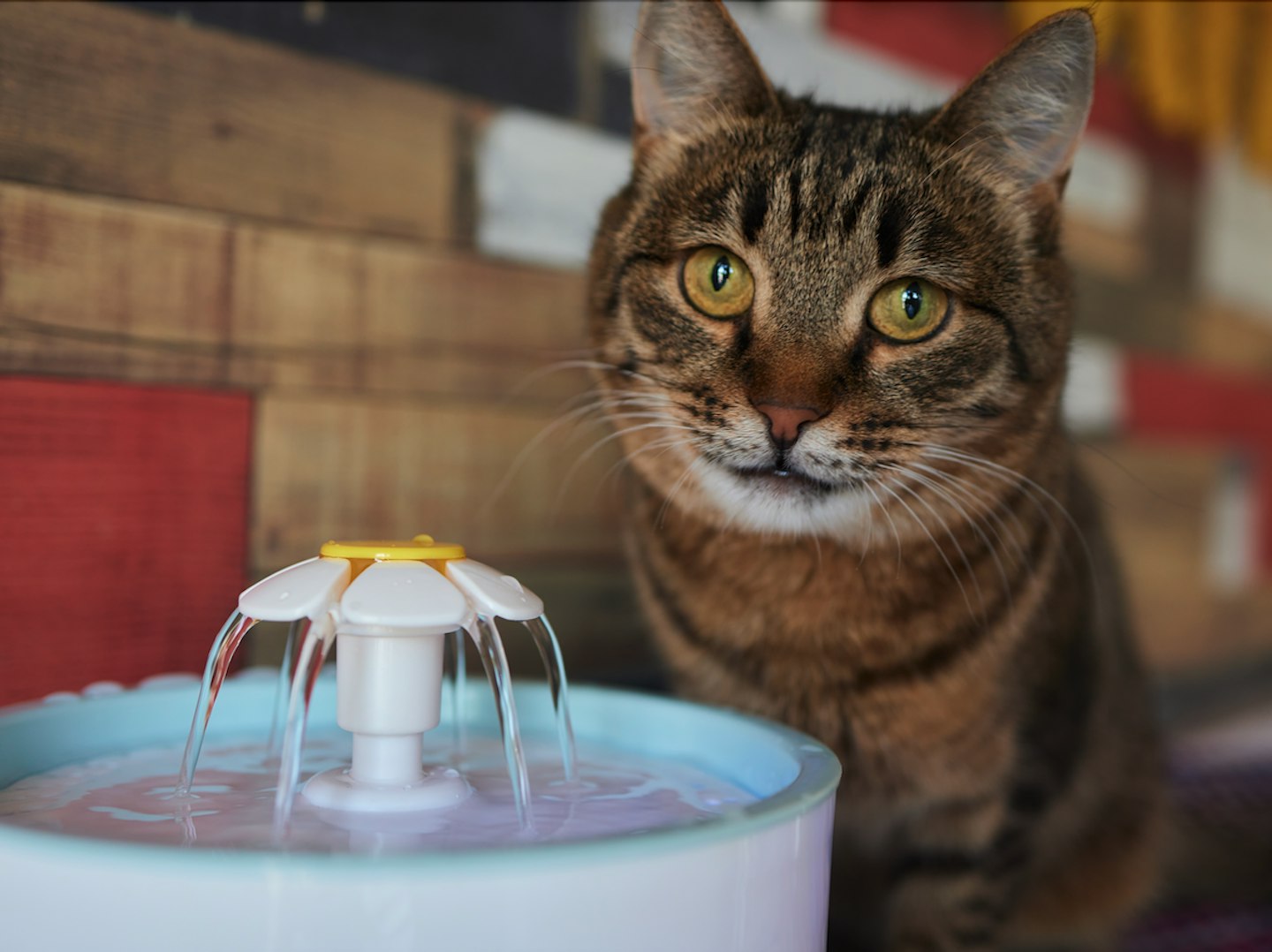
What should I feed my cat?
With so many options on the market, choosing what food to feed your pet cat can seem overwhelming.
Unless your cat has dietary requirements (for example, a sensitive stomach), we recommend choosing a ‘complete’ food, formulated for cats for their particular life stage.
Opt for a brand who are a member of UK Pet Food – whether you’re feeding them wet or dry food.
A ‘complete’ food provides all the essential nutrients a cat needs in the right amounts and proportions. By feeding a complete cat food you know you're feeding your kitty a well-balanced diet that meets their needs.
Does age impact what I should feed my cat?
Your kitty will require a different caloric intake and balance of nutrients depending on their stage of life. When buying your cat’s food, opt for one that is age-appropriate, so you know they are getting everything they need.
All kittens and cats are different, but in general:
Kittens
Kittens burn through energy, so it’s important they're given kitten-specific food packed with nutrients to help them develop. As they have small stomachs, it’s advisable to feed them little and often. As a rule of thumb, feed your kitten four times a day for their first six months, then drop this to two meals a day.
Adult cats
Cats aged one to eight aren’t as energetic, so need a different balance of nutrients to stay healthy. As a rule of thumb, feed your adult cat twice daily.
Senior cats
Older cats (or as we call them, senior kit-izens!) who are eight years plus will likely need cat food for seniors as it is easier to digest with extra ingredients to support their ageing bodies and organs. It'll depend on their health but, as a rule of thumb, feed your senior cat twice daily.
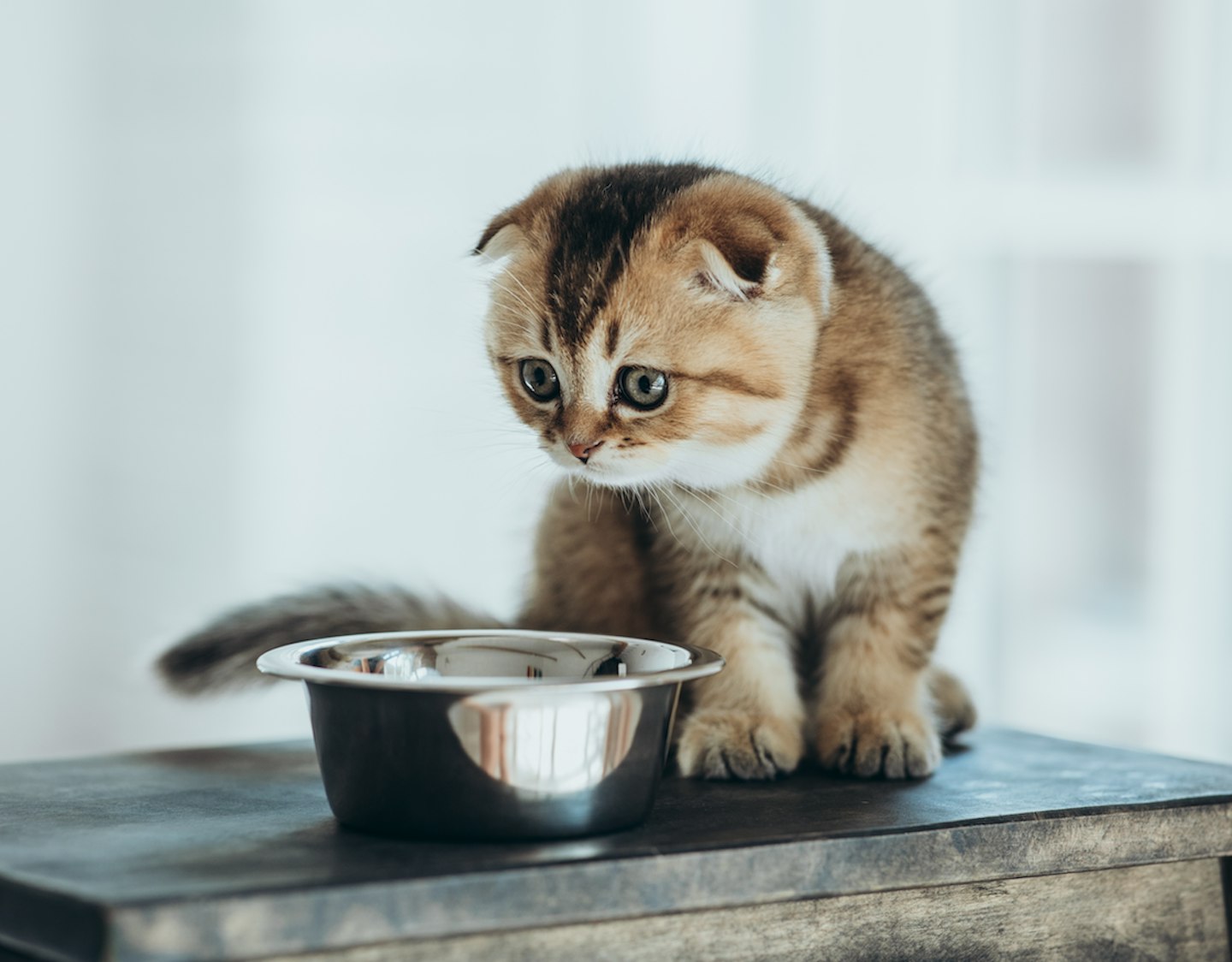
Should I feed my cat wet or dry food?
You can feed your cat wet food, dry food, or a mixture – it's down to you and your cat’s preference.
Both have pros and cons. While wet food is generally more appealing to cats – especially fussy eaters – it spoils much more quickly.
Meanwhile, dry food can be left out all day and is more beneficial for your cat’s teeth and gums. However, it contains much less water which can be problematic – particularly if your kitty has a medical condition that requires increased water intake.
Anna says, "There isn’t one best type of food for your cat, but I recommend buying a high-quality complete diet as this will meet your cat’s nutritional needs. Dry food or kibble is widely available and convenient to feed. It’s also more hygienic than wet, especially if you want to make it available to your cat throughout the day. Wet food shouldn’t be left out if your cat doesn’t eat it straight away as it can attract flies or go off, especially in hot weather."
Is canned cat food better than pouches?
Anna says, "Wet food is available in cans, pouches or foil tins. The type of packaging is much less important than the ingredients the food contains.
"Check the label to ensure the food is a complete diet, not a complementary food which won’t contain the correct balance of ingredients when it’s fed alone.
"You can feed a mix of wet and dry food to your cat, but it’s important to make sure you feed appropriate portions of each food to prevent your cat becoming overweight."
Should I feed my cat a vegetarian, vegan or raw food diet?
Cats are obligate carnivores, so need meat to stay healthy. They haven’t adapted to consuming a vegetarian or vegan diet and there are vital nutrients they can only get from meat.
Because of this, it is inadvisable to feed your cat a plant-based diet.
We wouldn’t recommend feeding your cat a homemade raw food diet. It is difficult to balance the right levels of calories and nutrients your cat will need. Also, handling raw meat can also cause the spread of harmful bacteria. This can be dangerous to you, others in your household and your four-legged friend.
There are ‘complete’ raw cat foods available, and raw food diets for cats are becoming more popular with owners. However, they are still controversial and can pose risks, so speak to your vet before putting your cat on one.
Can cats eat dog food?
It’s not recommended that cats eat dog food, and it can be damaging for them in the long term. A few mouthfuls of dog food shouldn’t be a cause for worry, although it can lead to stomach upsets.
However, if cats are fed dog food for a long time, they can end up becoming unwell as they aren’t able to process certain key nutrients.
Cats are only able to process meat products for certain key nutrients. For example, cats can only get an amino acid called taurine from animal-based proteins.
Taurine is essential for many vital tissues and organs in the body, so feeding a dog diet could mean your cat doesn’t have enough in their body and make them unwell.
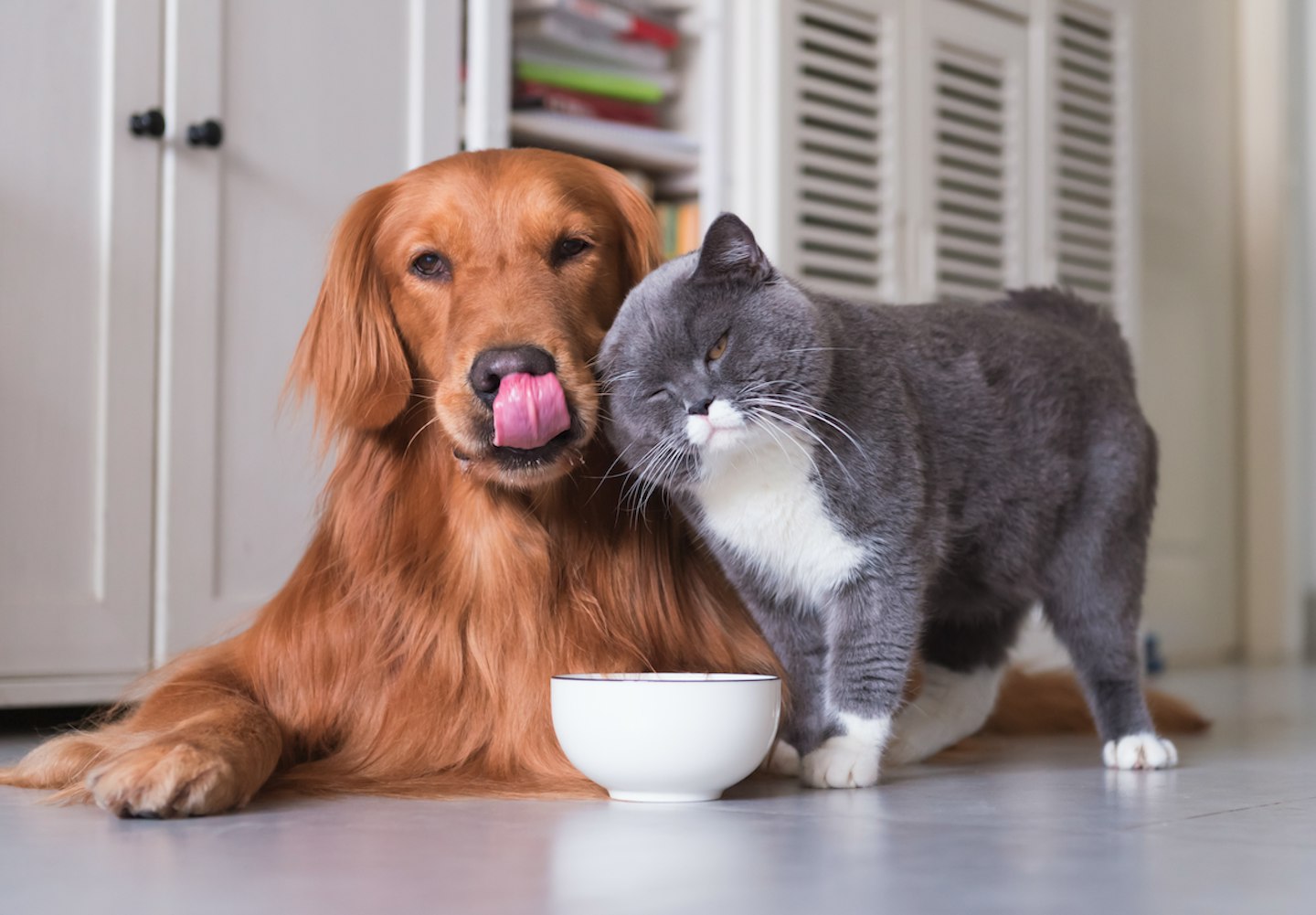
Can cats eat a homemade diet?
If it hasn’t been recommended by your vet, homemade food should be saved for the very occasional treat.
See below for a list of human foods that are safe and harmful for cats to ingest.
How much food should I feed my cat?
How much food you should feed your cat will depend on their circumstances.
For example, outdoor cats are usually more active so tend to burn more calories than indoor cats. And larger breeds of cats, such as Maine Coons, will eat more than slighter breeds such as Siamese.
If you’re unsure about how much grub to dish your cat up, ask your vet for guidance. But a good place to start is the back of your pet’s food packet.
Anna says: "[How much to feed your cat] will depend on things like how much exercise your cat gets and their size. Always follow the feeding guide on the packet. Feed your cat the smallest amount recommended for their weight and increase this only if your cat is losing weight.
"A lean cat is likely to live longer, have more energy and be much less prone to disease. If your cat gets treats or other bits of food during the day then reduce their food accordingly."
You may notice the portion sizes suggested for dry and wet cat food vary. This is because dry food is more calorie-dense.
Whether you feed dry, wet, or a combination of both, you need to ensure you’re feeding an appropriate amount. Feed the recommended amount (as Anna suggests) on the packet and assess your cat’s behaviour and weight over the next two weeks.
Hopefully, your cat will be eating happily and maintaining a healthy weight. If not – for example, your cat is putting on weight, leaving food in the bowl or appearing hungry in the middle of the night - adjust the amount you’re feeding accordingly and monitor them again.
If you have any questions or concerns speak to your vet.
Once you know the amount your cat needs to consume in a day, use scales to weigh out the amount. This way you know they are getting exactly what they need. Studies have shown measuring out food by eye is often inaccurate.
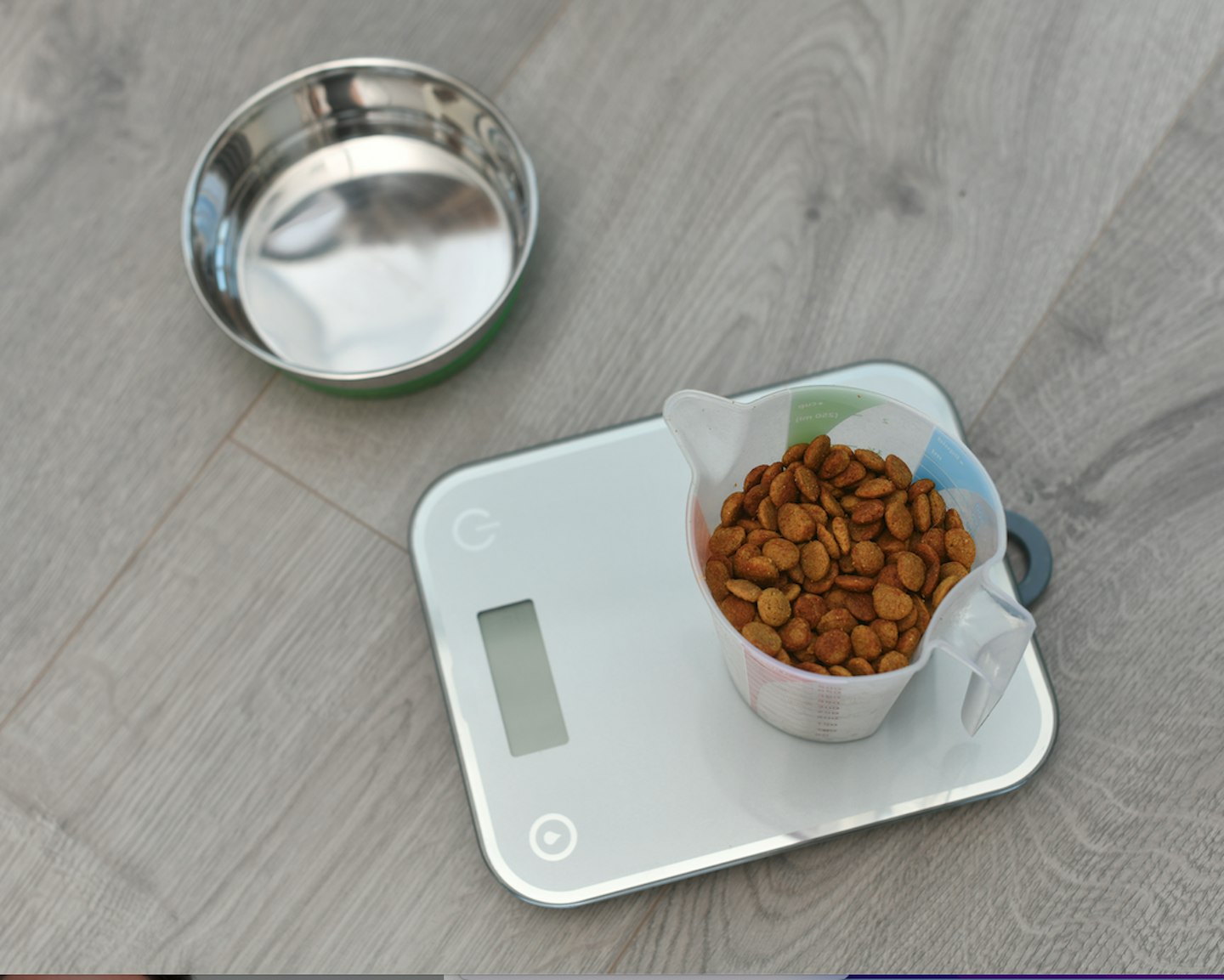
How many times a day should I feed my cat?
Most cat food packaging gives you the total daily amount your cat should be fed depending on their weight.
If feeding kibble, you can feed the entire amount to your cat in one go and let them graze throughout the day. Most cats eat small amounts, regularly. But if you find your cat eats their nosh all in one go, consider feeding the same daily amount but divided into two - or more - sittings.
When it comes to wet food, your cat should eat it within 30 minutes to stop it from going bad. If splitting wet food into two or more meals, take the total amount of food your cat needs each day and divide that number by how many times you intend to feed.
If feeding your cat a combination of dry and wet food it is a little more complicated. Speak to your vet about getting the ratio correct.
How can I control my cat’s weight?
Your cat’s ideal weight will depend on things like their age and breed. Your vet will be able to tell you what they should weigh.
An easy way of telling if your cat is over or underweight is simply by looking at them.
You should be able to feel their ribs with a little fat coverage.
You should not be able to see their spine but feel it under a little fat coverage.
From the side, an overweight cat will have a rounded belly. Whereas a cat at their ideal weight will be slightly nipped in at their ribs.
If you look down at your cat, they should go in a little at their waist.

How can I help my cat lose weight?
Your cat will be defined as overweight if they’re 10 per cent over their ideal weight, and obese if they’re 20 per cent over.
Being overweight or obese will mean your cat is more at risk of health issues including diabetes and arthritis, so it is important to make sure you and your vet regularly keep an eye on them.
If your cat is overweight, your vet will be able to advise you to help them lose weight. Do not put them on an extreme diet – or starve them – as this will likely cause them to become unwell.
Your vet may recommend gradually reducing their daily allowance of food (use scales to measure this out accurately), cutting out (or down on) treats, transitioning them onto special food for weight loss and increasing the amount of exercise they get.
Below, Anna Ewers Clark, lead vet at Blue Cross, answers your frequently asked questions about your cat’s diet…
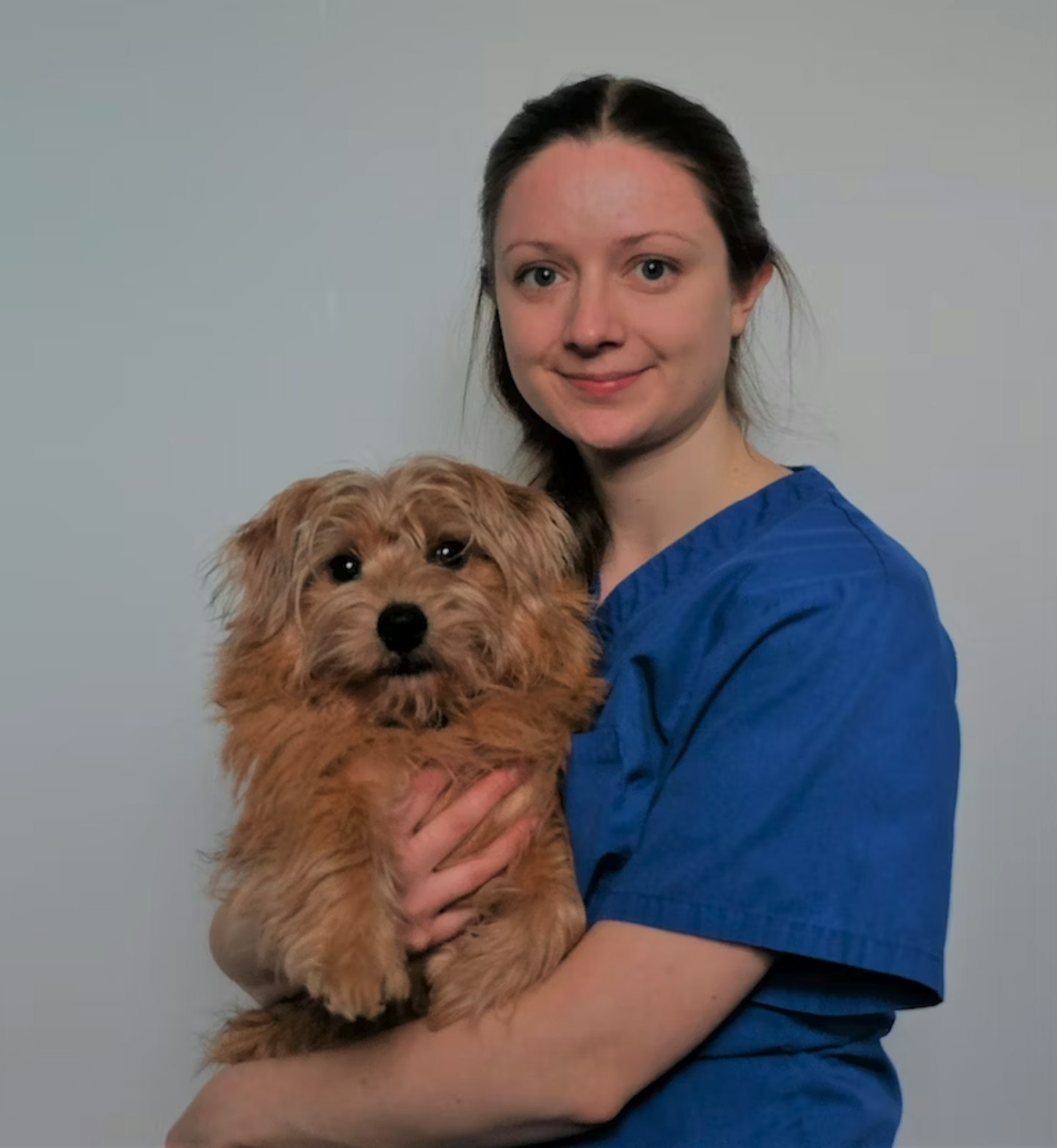
FAQs
How long can cats go without food?
Cats need to eat regularly to maintain their health. Eating less for a day or missing one meal might not be a cause for concern, but if your cat is refusing to eat their food or losing weight it could be a sign that they’re unwell.
If your cat isn’t eating normally or stops eating, it’s important to get them checked by your vet.
Are there any human foods that cats can eat?
Cats can eat some human foods, including boneless cooked meat and fish, but they should be fed as a treat only.
Remember they have different nutritional needs to humans. Something that seems like a small snack to us can provide a lot of calories to a cat.
Kitties shouldn’t be given cow's milk as a treat. Once cats have left their mothers and moved on to solid food, they have no nutritional need for milk, and milk from cows can give them a stomach upset.
It’s very difficult to get the correct balance of nutrients for your cat if you’re only feeding them human food, so it’s safest to choose a high-quality, complete pet food as their main diet.
Are there any human foods that are poisonous to cats?
Foods including onions, garlic, raisins, chocolate and alcohol can be dangerous for cats. They should be kept out of their reach - including onion gravy.
How can I tell if my cat has a food allergy?
Cats can be allergic to certain ingredients in their food. Some cats will start to show signs of food allergy when they’re young, but others can develop problems later in life.
Symptoms of a food allergy include vomiting, diarrhoea, itchy skin and hair loss.
If you’re worried your pet might have an allergy, it’s important to get them checked by a vet. They will be able to discuss the possible causes of their problem and recommend ways to help.
Is it dangerous for a kitten to eat food for an older cat (and vice versa)?
It’s important to feed your pet a diet that’s suitable for their life stage.
As kittens are growing, they have different nutritional requirements to adult cats.
A one-off feed is not worrying, but feeding a kitten an adult cat diet all the time could lead to health problems.
Can I give my cat treats?
Cat treats can be given and can be helpful when training your cat.
Always give in moderation as they can be high in calories, and factor them into your cat’s daily calorie allowance.
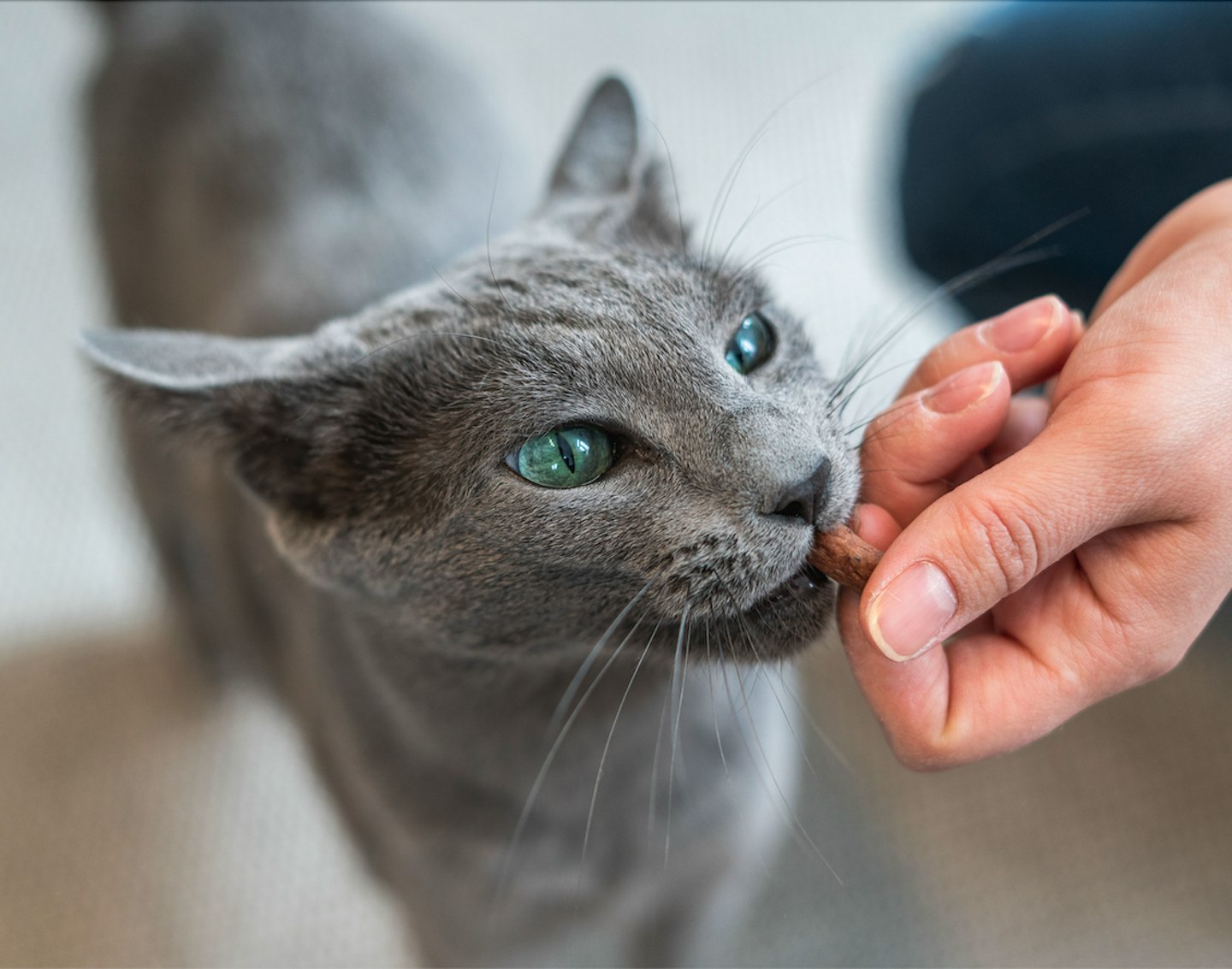
This article contains expert advice from Anna Ewers Clark, lead vet at Blue Cross, a charity that finds homes for abandoned or unwanted pets and keeps pets healthy by promoting welfare and providing veterinary treatment. Since graduating from the Royal Veterinary College in 2015 she has worked in small animal veterinary practices in both the charity and private sector. She also has a degree in Animal Behaviour and Welfare. Anna lives with her dogs, Kirk and Jerry, and two rescue rabbits, Jack and Harley.
Joe Brothwellis editor of Take a Break Pets and adores all creatures great and small. Despite being a doting cat dad to Winnie, she continues to be aloof!
